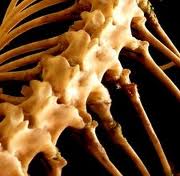 Spinal decompression is not necessarily a new treatment. In fact, you can trace back some forms of spinal decompression hundreds of years ago. A simplified definition of spinal decompression is the process of relieving pressure on the nerves of the spinal column. Compression of the spinal column and vertebrae is known to cause many forms of back pain and nerve pain.
Spinal decompression is not necessarily a new treatment. In fact, you can trace back some forms of spinal decompression hundreds of years ago. A simplified definition of spinal decompression is the process of relieving pressure on the nerves of the spinal column. Compression of the spinal column and vertebrae is known to cause many forms of back pain and nerve pain.
Surgical spinal decompression is something that you would need to discuss with your doctor. As always, non surgical options should be considered before considering surgery. Non surgical spinal decompression devices were introduced in the 1980’s. You may have seen or heard about inversion tables, they were made widely known by a company called Teeter. Teeter inversion tables make inversion therapy easy to do from the comfort of your own home.
Inversion therapy has helped people from all over the world, with conditions like herniated discs, pinched nerve pain, sciatica, chronic back pain and more. If you would like to learn more about spinal decompression, click on the link below.
There is also a fascinating device out of Australia, which many experts believe can revolutionize home treatments for back pain. This device is called the Back Ease. Studies by the American Journal of Physical Medicine & Rehabilitation in 1999 found that 81% of people studied, found symptomatic relief with traction therapy.
Treatments with the Back Ease only take 3 – 6 minutes per day. This is far more effective than spending hours going back and forth to a massage therapist or chiropractor. The Back Ease creates space between the vertebrae that is essential for a healthy back, thus eliminating the pain causing pressure that is placed on the discs and nerves.
Learn More about the Back Ease Decompression Device here
You can experience both short term and long term relief with some of the newest spinal decompression treatment programs.
To learn more about which treatments are right for you, visit the spinal decompression page of our website.
Learn More about Spinal Decompression

